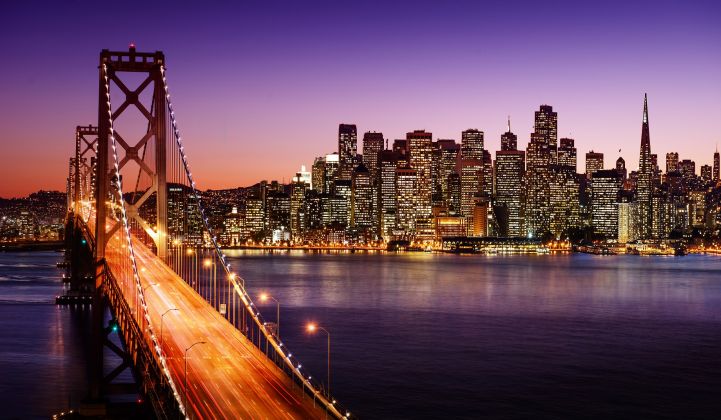San Francisco has made a $2.5 billion offer to buy Pacific Gas & Electric’s grid assets within its city limits, the most concrete step yet from cities, counties and public agencies served by the bankrupt Northern California utility to lay claim to their portions of its power grid.
Friday’s offer came in a letter from Mayor London Breed and City Attorney Dennis Herrera to PG&E. But it began taking shape in February, a month after PG&E filed for Chapter 11 bankruptcy protection, when city officials began exploring options to take over power distribution from PG&E.
San Francisco’s bid for PG&E’s assets, while coming amidst PG&E’s bankruptcy, is rooted in a years-long dispute with the utility. City officials have long complained that PG&E has overcharged it for grid upgrades, and last year claimed that PG&E’s intransigence has delayed more than 16 major construction projects, ranging from affordable housing to public safety facilities.
"There has been a lack of investment in infrastructure over the course of the last decade by PG&E," Herrera told KQED. "And that is, and was, motivated primarily by pursuit of profit. That's not something that San Francisco is going to be pursuing. We're not interested in profit.”
Instead, San Francisco, which has unsuccessfully sought to create its own utility in the past, sees the opportunity to deliver safer, cheaper and cleaner electricity than PG&E, he said. Owning and managing its own grid could bring its infrastructure efforts closer in line with these plans.
San Francisco is also seeking to expand the reach of CleanPowerSF, the community choice aggregation (CCA) serving the city’s customers. The CCA increased its share of customers to more than 375,000 business and residential accounts as of July, up from fewer than 82,000 customers as of July 2018.
While SF seeks grid takeover, CCAs seek 'wires-only' PG&E
But its offer to buy PG&E’s grid assets stands somewhat in contrast to the way that other CCAs serving PG&E customers have approached the opportunity provided by the utility’s bankruptcy, its second in as many decades.
That’s because the California Community Choice Association (CalCCA) has asked state regulators to consider another option for PG&E’s future — transforming it to a “wires-only” distribution grid operator, and allowing CCAs to take over the role of generating and procuring electricity.
CalCCA represents CleanPowerSF, as well as Marin Clean Energy, Sonoma Clean Power, Monterey Bay Community Power, Peninsula Clean Energy, Silicon Valley Clean Energy, and East Bay Community Energy. These seven CCAs have collectively taken over energy procurement for nearly half of PG&E’s 5.4 million electricity customer accounts, leaving PG&E with the responsibility to upgrade and maintain the power grid that serves them, and maintain the revenues to carry out that task.
San Francisco isn’t the only public entity to offer cash in exchange for its portion of PG&E’s grid. South San Joaquin Irrigation District in California’s Central Valley last week submitted a $116 million bid for assets in its own territory — a bid that PG&E described as significantly below the assets’ actual value, Bloomberg reported.
San Francisco’s bid was received coolly by PG&E, which noted in a statement that it has been “part of San Francisco since the company’s founding more than a century ago,” and doesn’t “believe municipalization is in the best interests of our customers and stakeholders.”
Any deal would need approval from the San Francisco Board of Supervisors, the San Francisco Public Utilities Commission, and the California Public Utilities Commission to move ahead.
PG&E is also expected to file its official plan for emerging from Chapter 11 bankruptcy protection on Monday. The utility filed for bankruptcy in January in the face of tens of billions of dollars in wildfire liabilities, and has faced alternative plans from multiple parties, ranging from large creditors to wildfire victims groups.
Michael Wara, one of the members of a California Gov. Gavin Newsom-appointed task force that advised on the state’s $21 billion utility wildfire fund legislation this summer, told KQED that San Francisco buying PG&E’s wires might end up passing wildfire-related grid upgrade costs on to other PG&E customers.
That’s because San Francisco’s grid serves a large portion of PG&E’s customers, but requires almost none of the wildfire-related upgrades that PG&E is facing for the hundreds of miles of transmission and distribution lines crossing the more rural and remote areas at highest risk of wildfires.




